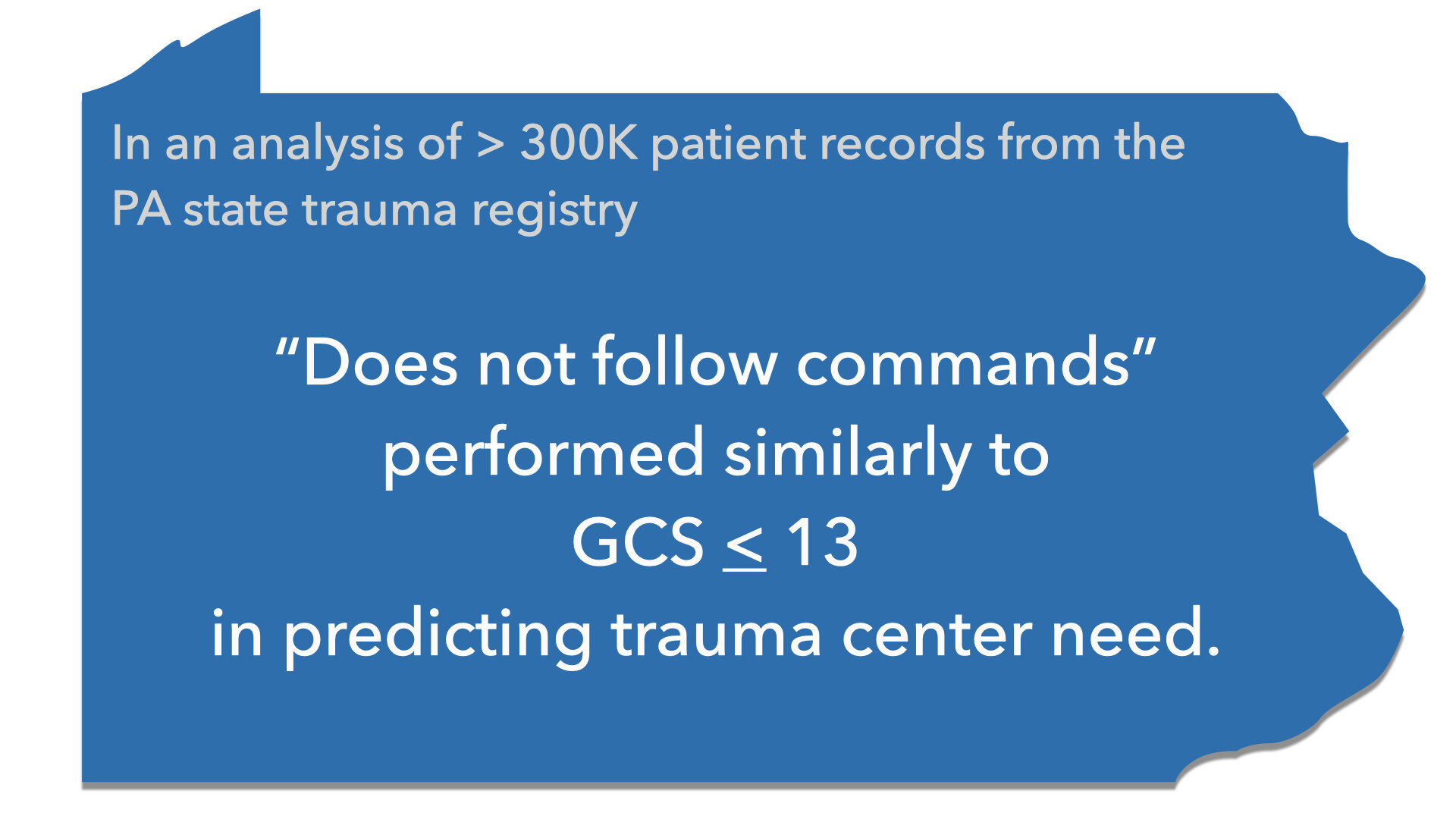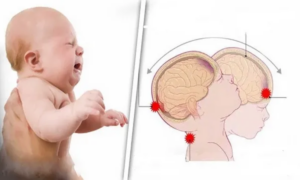Article: Kupas, D. F., Melnychuk, E. M., & Young, A. J. (2016). Glasgow coma scale motor component (“patient does not follow commands”) performs similarly to total glasgow coma scale in predicting severe injury in trauma patients. Annals of emergency medicine, 68(6), 744-750.
Background: Trauma patients are often triaged to trauma centers based on their GCS. Indeed, a GCS < 13 is one of the physiologic criteria within the CDC Field Trauma Triage Guidelines for transport to a trauma center. However, when GCS is calculated by providers, there is a great deal of variability and inaccuracy. One proposed substitution is a simpler binary assessment of a GCS-motor (GCS-m) score < 6 (“patient does not follow commands”). The objective of this study was to compare the total GCS score < 13 with a GCS-m<6 in predicting trauma-related outcomes.
Methods: This was a retrospective study of prospectively-collected data over a four-year period (1999-2013) from the Pennsylvania Trauma System Foundation registry, which captures all patients with a trauma diagnosis who are admitted to state-accredited Level I, II, II or IV trauma centers. Only patients age > 18 yo were included. 370,392 complete patient care encounters were included in the study.
The out-of-hospital GCS score, out-of-hospital GCS-m score, and Injury Severity Score (ISS) were obtained for each patient. In addition, they collected CDC Field Trauma Triage Box 1 physiologic data including systolic blood pressure and respiratory rate.
The primary outcome by which GCS was compared to GCS-m was an ISS>15, which is the established definition of a major trauma or polytrauma. They also evaluated secondary outcomes including ISS > 24, death, ICU admission, need for craniotomy, any surgery, intubation, and a composite variable of “Trauma center need” which was defined as a ISS > 15, ICU admission 24 hrs or greater, need for surgery or death before discharge.

The sensitivity and specificity of the two scores for both the primary outcome of major trauma and the secondary outcomes were compared using receiver operating curves. This was done both for all patients who had a GCS and GCS-m recorded, and also a secondary analysis which excluded patients who met CDC Field Trauma Triage criteria for trauma center need based on other physiologic parameters or documented injuries. They defined a difference of < 5% in the area under the receiver operating characteristic curve as clinically unimportant.
Key Results: The differences between the GCS < 13 and GCS-m < 6 fell below the pre-specified 5% threshold for clinical importance for both analyses.
Conclusions: The simpler decision point of “does not follow commands” is just as predictive of outcomes and trauma center need as the full GCS.
What this Means for EMS: The physiologic trauma triage criteria should be simplified to incorporate the binary assessment of “not following commands” in place of calculating a full GCS. Strongly consider transport of trauma patients who are not following commands directly to a trauma center.
Article Summary by Maia Dorsett, MD, PhD, FAEMS



